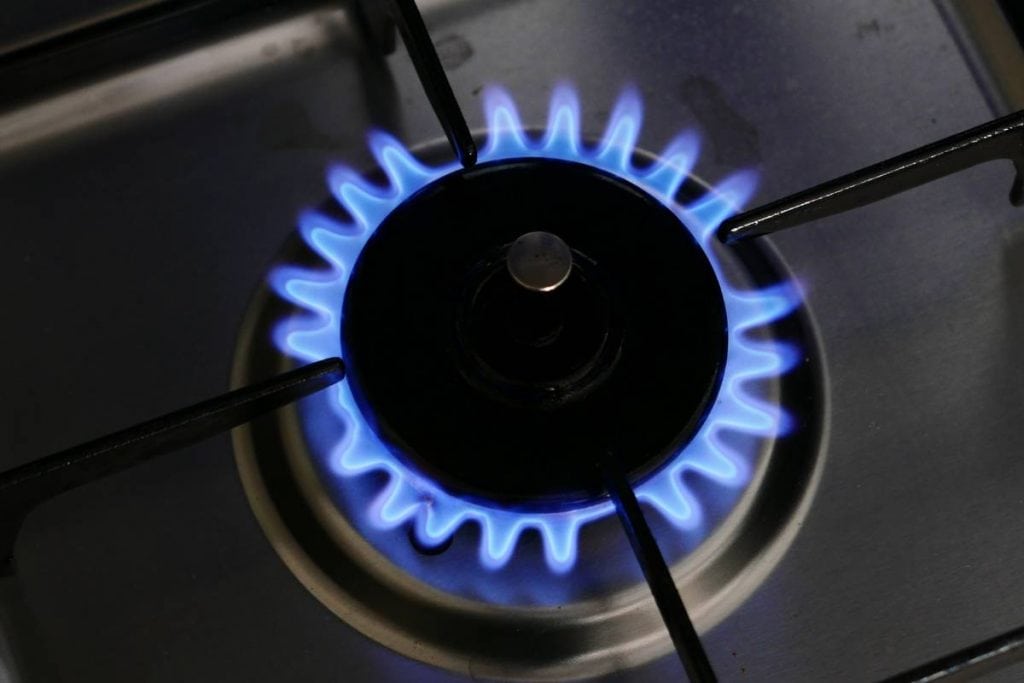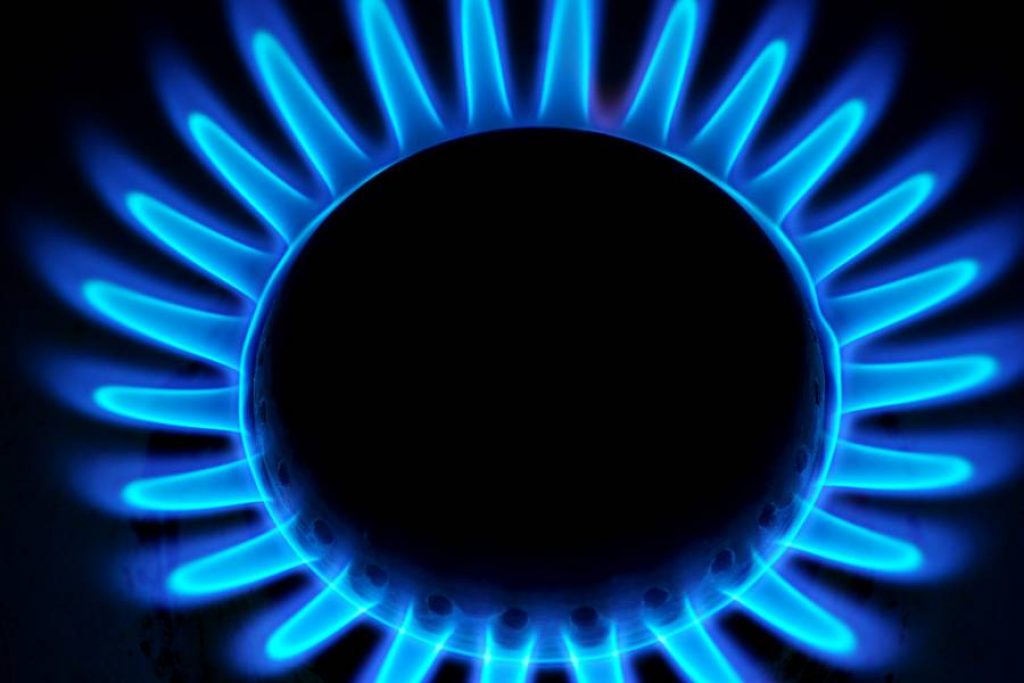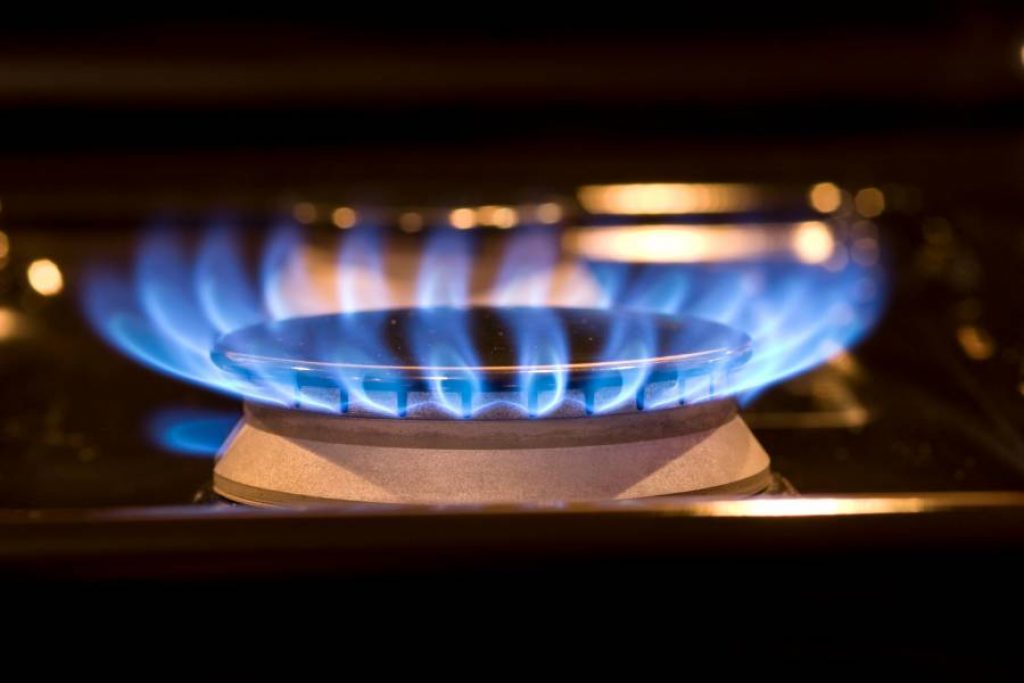While using a gas stove, you might find the flame color to be a little surprising. Unlike the yellow or orange glow that we generally associate with fire, gas stoves usually deliver blue flames.
Considering the potential fire hazards of a malfunctioning gas stove, it is only normal to be frightened if the flame has an unusual color to it. Don’t worry, blue flames are perfectly normal on a gas stove and are a good sign.
Regardless of whether you discovered about gas stoves having blue flames only recently or have wondered about it forever, this article will help you out. Keep reading to learn more about why gas stoves have blue flames and what it means. The flame color is an important indicator of the performance and emission levels of a gas stove.

What Does Blue Flame On Gas Stoves Mean?
A blue flame on a gas stove is a good sign. It denotes that there is a complete combustion taking place. In case the combustion isn’t adequate, you will find a warning sign in the form of a yellow, orange, or red flame. If you find that the blue flame has a yellow burning tip in some places, it points to the lack of adequate air.
Gas stoves typically operate on LPG or PNG. When you have a blue flame, it means that the pipe is carrying the right amount of air. Some of the other gases that burn with a blue flame include pure hydrocarbons such as methane, ethane, butane, and propane. All these gases come from refined oil and natural gas processing.
When hydrocarbon gases burn, they produce a blue flame. With complete combustion, the blue flame on your gas stove would be the hottest, around 1980°C. The flame temperature will be around 1960°C if you use methane as your fuel.
Unless the combustion is complete, you will be wasting your fuel. This would also lead to the generation of carbon monoxide gas, which is harmful to health. So, if you find that your gas stove has a yellowish or reddish flame, get it checked to prevent issues. Improper combustion often stems from the blockage of burners with dirt. This leads to the buildup of soot inside your stove.
Why Is Blue Flame Hotter Than Yellow Or Orange Flame?
The color of the flame on your gas stove implies not only the level of combustion but also the temperature. Among all the flames, the blue one is the hottest since it involves complete combustion of the available air.
The blue flame tends to be the hottest, and then comes the yellow, orange, and red flames. Since blue flames involve hydrocarbon gases, it implies complete combustion. Yellow and orange flames indicate incomplete combustion. So, the temperature of the blue flame is around 1960-1980°C, while yellow flames are only around 1000°C.
The energy level of the released photons also explains the color of the flame. Let’s understand why blue flame tends to be hotter than yellow flames from this perspective. When the energy levels are low, you will find the color spectrum close to red. The color spectrum tends to be close to violet with higher energy levels.
So, the blue flame is closer to violet than the red color. This justifies the fact that they carry more energy and are hotter. The color of the flame is also an indicator of the gases that these gas stoves contain. Gases like propane and methane combust completely with a blue flame.

Does Blue Flame Mean Carbon Monoxide?
No, there’s nothing to worry about blue flames related to carbon monoxide poisoning. Blue flame means no or negligible levels of carbon monoxide emissions. This is because gas stoves release carbon monoxide only in case of incomplete combustion, when there isn’t enough oxygen. But blue flame indicates complete combustion, where the only emissions are carbon-di-oxide and water vapor.
In case you find signs of CO poisoning while working on your gas stove, make sure to call in a professional technician immediately. A thorough inspection can help you detect possible glitches in the system.
To ensure complete combustion of the gas, let fresh air in by enhancing the ventilation around your kitchen. In case your gas stove has been malfunctioning, appoint a technician to inspect it. This way, you can eliminate possible hazards for your family members.
Carbon monoxide doesn’t have any smell, so you won’t be able to detect it by its odor. In case your gas stove releases this toxic gas, it would escape into the air inside your kitchen. Some of the common indicators of incomplete combustion include poor performance of the stove, yellow, red, or orange flame, and sooty smoke.
How To Achieve Blue Flame On A Gas Stove?
Considering the safety in your kitchen and fuel optimization, you would like to achieve a blue flame on your gas stove. This flame produces maximum heat and ensures efficient heat transfer.
You can also control the heat efficiently when it burns to the maximum potential. The burner would have a blue flame with the proper adjustment in the gas stove. In case you haven’t adjusted the burner properly, the gas flame will be yellow. So, here are certain tips that would help you achieve a blue flame on a gas stove.
Ensure More Air
An incorrect ratio between air and fuel would turn the flame on your gas stove orange or yellow. In case the combustion of the gas is incomplete, you will notice colors other than yellow in the gas oven. To address this issue, you need to make necessary adjustments to the air shutter of the burner. This would allow it to make space for more air. If you are comfortable with DIY tactics, you should be able to carry out these adjustments.
Make Necessary Adjustments
If the flame issue continues to bother you, try to make the following adjustments.
- Once the stove is cool, do away with the top grates. You need to expose the pipes of the burner, so lift the stovetop.
- In most stoves, the air shutter is close to the burner gas valve. This is a sliding tube or plate covering the burner air vent.
- Now, you will come across a screw that prevents the shutter from making any movement. Turn the burner on completely. Now, gently open the shutter, and you will find the flame turning blue. This is the most appropriate setting on the gas stove that you have been looking for.
- Lastly, tighten the screw and put your burner off. Replace the gas stove grates after you lower the top of the stove.

More Tips
Now that you know what the blue flame in your gas stove means, you should feel positive since you are optimizing your fuel. This requires proper installation and regular maintenance of your gas stove. So, you need not worry about any hazardous emissions of carbon monoxide at your home.
The air can turn toxic only when you fail to install your gas stove properly. The lack of timely maintenance can also deteriorate the quality of indoor air. However, you can tell this by looking at the color of the flame.
The secret to mitigating risks associated with gas stoves lies in using a quality gas stove. This way, you would have the perfect mechanism in your kitchen to obtain a blue flame. Besides ensuring fuel economy, a branded gas stove also warrants safety for your family members.

